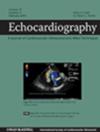Pre-Operative Reduced Atrial Compliance Is Predictive of Post-Operative Atrial Fibrillation in Patients Undergoing Esophagectomy
Abstract
Background
There are no established predictors of postoperative atrial fibrillation (POAF) in patients undergoing esophagectomy. This study aimed to determine whether pre-operative bi-atrial strain might predict POAF in patients undergoing esophageal resection.
Methods
Patients who underwent esophagectomy and had preoperative echocardiography underwent comprehensive myocardial strain analysis measuring left and right atrial (LA and RA) phase-specific strain and left and right global longitudinal strain (LV and RV GLS). Clinical and traditional variables were sampled and considered for multivariable models with the POAF serving as a primary outcome of the study.
Results
Fifty-nine patients constituted the study group and the incidence of POAF was 25.4% (N = 15). Patients who developed POAF were older and had a higher rate of anastomotic leak. LA strain analysis was overall suggestive of reduced LA compliance in the POAF group with decreased LA reservoir strain (33.9 ± 8.9 vs. 22.0 ± 8.8%, p < 0.001) and LA conduit strain (−18.4 ± 9.2 vs. −9.6 ± 5.5%, p < 0.001). RA reservoir strain was also reduced in the POAF group (36.9 ± 8 vs. 29.6 ± 8.1%, p = 0.006) together with reduced RA conduit strain (−20.6 ± 6.9 vs. −15.4 ± 7.6%, p = 0.042). LV GLS was decreased in patients with POAF (−16.2 ± 3.5 vs. −12.3 ± 7.5%, p = 0.036), along with RV GLS (−17.6 ± 3.4 vs. −14.4 ± 3.8%, p = 0.009). Reduced LA reservoir strain remained an independent predictor for POAF when combined with the presence of an anastomotic leak [OR: 0.85 (95% CI: 0.75–0.92), p < 0.001] yielding model with AUC of 0.86 with a sensitivity 60.0% and specificity 90.1%.
Conclusion
Reduced bi-atrial compliance evidenced by standard echocardiographic strain analysis predicts POAF in patients undergoing esophagectomy. Comprehensive echocardiographic evaluation should be considered in surgical candidates before esophageal surgery, given the detected subclinical global myocardial dysfunction.

 求助内容:
求助内容: 应助结果提醒方式:
应助结果提醒方式:


